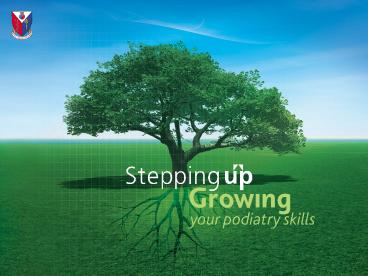ANALYSING QUALITATIVE DATA PowerPoint PPT Presentation
1 / 24
Title: ANALYSING QUALITATIVE DATA
1
(No Transcript)
2
HOW TO ANALYSE QUALITATIVE DATA
- Dr Lisa Farndon (Podiatric Development
Facilitator, Sheffield PCT) - Dr Alan Borthwick (Lecturer, University of
Southampton)
3
Aims
- Give examples of the different research methods
that can generate qualitative data - Explain the different methods that can be used to
organise analyse data - Describe the use of a thematic framework
- Work through an example to illustrate coding
4
Methods which generate qualitative data
- Interviews
- These can be in-depth, semi-structured and
- involve key actors
- Patton (1990) identified 3 forms of depth
interview - Informal conversational
- General interview guide
- Standardized open ended
5
Key Actor Interviews
- Provide depth and detail
- Provide information perception
- Provide understanding of motives behind actions
under study - detailed historical data, knowledge about
contemporary inter-personal relationships
(including conflicts), and wealth of information
about the nuances of everyday life - (Fetterman 1989)
6
Focus Group Interviews
- These are used to explore a groups interaction
in order to generate data on a subject - Typically between 4-12 in a group with a
facilitator using open-ended questions - Can be used to explore individuals knowledge and
experiences
7
Documentary Analysis
- Uses documents to examine a particular issue or
topic - Provide a broad coverage over a long timeframe,
helping to chart events, activities and changes - Can examine topics from many years ago which
would not be possible using other methods of
investigation - Is a stable and repeatable method if all the
material can be retrieved cheap
8
Data
- Interviews focus groups are normally taped
transcribed verbatim - Documentary analysis will yield a large amount of
documents reflecting the relevant themes under
investigation
9
Analysis Methods
- Framework Approach (Ritchie Spencer)
- Familiarization
- (read transcripts a number of times)
- Identifying a thematic framework
- (developed based on the research question/aims
focus group guide) - Indexing
- (thematic framework is systematically applied to
the data in its textual form)
10
- Charting
- (headings and subheadings drawn from the
thematic framework and research questions
represent themes for each respondent ) - Mapping Interpretation
- (data is sifted and charted according to core
themes and analysed in order to define concepts,
find associations and provide explanations for
the data)
11
Identify a Thematic Framework working example
- Why do new patients seek NHS podiatry care?
- Interview data coded according to
- Why do new patients attend?
- What do new patients want?
12
Indexing (coding)
- Reading through all the data using the thematic
framework - Assign sub-themes
- Highlight text which relates to the themes
13
Example
- Well I just cant get down to my feet
anymore,as I have very severe arthritis in my
hips that stops me bending and it is worrying me
that my feet seem to be getting worse and worse
and I dont know what to do about them
- MOBILITY (limitations)
- MOBILITY (concern)
- LIMITATIONS OF SELF CARE (knowledge)
14
Why do new patients attend for podiatry care?
- Themes
- Mobility concerns (pain, limitations in self
care, concern) - Limitations to self care (lack of knowledge,
unable to provide treatment) - Beliefs economic factors (entitlement,
referred, financial)
15
What do new patients want from podiatry service?
- Themes
- Treatment (pain relief, improve cosmetic
appearance, maintain mobility, eradicate foot
problems) - Education (preventative self care advice,
re-assurance)
16
Charting Why do new patients come for podiatry
care?
17
Mapping Interpretation
MOBILITY Pain Limitations Concern
BELIEFS ECONOMIC FACTORS Entitlement Referral Fi
nancial
LIMITATIONS OF SELF CARE Treatment Knowledge
18
Findings
- Illustrate findings from the data with excerpts
from the text - Anonymise subjects/patients
- we had patients wandering around in a daze,
with no one to take them home and no one at home
to look after themIntravenous valium was one
event that went wrong and that wasnt good
politically - (interview data extract, cited in Borthwick AM,
Occupational Imperialism at work the case of
podiatric surgery, BJP, 20014(3) 70-79)
19
Software Packages
- NUDST
- ATLAS.ti
- However, though they may
- aid organisation of data they can be quite
- complex to use pens paper may be easier
- cheaper
20
Considerations
- Audit/paper trail
- Triangulation (data, method, analysis, analysts)
- Analysis meet to discuss agree themes, return
findings to sample group to assess if it is a
fair representation
21
GROUP WORK
- Read through the example provided and assign
themes to relevant pieces of text
22
Key references
- Boyatzis, R. E. (1998). Transforming qualitative
informationthematic analysis and code
development, Sage. - Braun, V. and V. Clarke (2006). "Using thematic
analysis in psychology." Qualitative Research in
Psychology 3 77-101. - Patton MQ, Qualitative Evaluation and Research
Methods, London Sage. 1990. - Ritchie, J. and L. Spencer (1994). Qualitative
data analysis for applied policy research.
Analyzing qualitative data. A. Bryman and R. G.
Burgess, Routledge 172-194.Fetterman DM,
Ethnography Step by Step, London Sage. 1989 - If you would like a copy of this presentation, or
a fuller list of references, please add your name
and email address on the sheet provided at the
desk
23
Thank you for your attention
- Have a tea break
24
(No Transcript)

